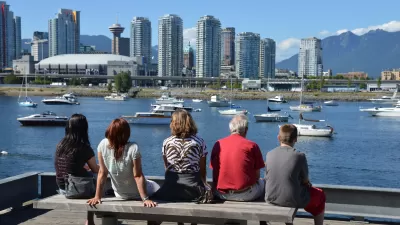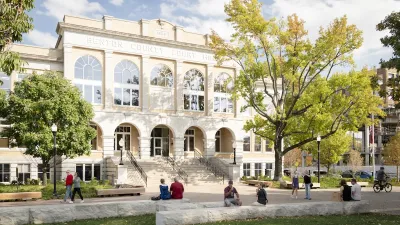The process by which creative types colonize a distressed neighborhood, making it safe for hipsters and developers, has become a common template for urban revitalization efforts. Neeraj Mehta asks who is served, and who isn't, by these forces.
Creative placemaking - the process by which "partners from public, private, nonprofit, and community sectors
strategically shape the physical and social character of a neighborhood,
town, tribe, city, or region around arts and cultural activities" - has become a common path by which city leaders, and planners, seek to bring economic growth and vitality to their cities. But in surveying the statements by which organizations define and decide to fund creative placemaking efforts, Mehta finds that a pro-equity agenda is missing from the conversation.
"When we talk about creative placemaking and its role in increasing
vibrancy and revitalizing neighborhoods," says Mehta, "we need to ask much deeper
questions and strive for much more explicit goals. Specifically, how is
our creative placemaking benefiting low-income communities and
communities of color?"
"Let's define 'who benefits' as a clear
indicator of our success or failure," argues Mehta. "We need to be more purposeful,
targeted and explicit about who our creative placemaking strategies are
intended to benefit. And if we're working in communities that are
distressed, poor or have been historically populated by communities of
color, then we need to make sure that whatever strategies we design, or
investments we make, are creating benefit for them."
FULL STORY: The Question All Creative Placemakers Should Ask

Alabama: Trump Terminates Settlements for Black Communities Harmed By Raw Sewage
Trump deemed the landmark civil rights agreement “illegal DEI and environmental justice policy.”

Study: Maui’s Plan to Convert Vacation Rentals to Long-Term Housing Could Cause Nearly $1 Billion Economic Loss
The plan would reduce visitor accommodation by 25% resulting in 1,900 jobs lost.

Planetizen Federal Action Tracker
A weekly monitor of how Trump’s orders and actions are impacting planners and planning in America.

Wind Energy on the Rise Despite Federal Policy Reversal
The Trump administration is revoking federal support for renewable energy, but demand for new projects continues unabated.

Passengers Flock to Caltrain After Electrification
The new electric trains are running faster and more reliably, leading to strong ridership growth on the Bay Area rail system.

Texas Churches Rally Behind ‘Yes in God’s Back Yard’ Legislation
Religious leaders want the state to reduce zoning regulations to streamline leasing church-owned land to housing developers.
Urban Design for Planners 1: Software Tools
This six-course series explores essential urban design concepts using open source software and equips planners with the tools they need to participate fully in the urban design process.
Planning for Universal Design
Learn the tools for implementing Universal Design in planning regulations.
Caltrans
Smith Gee Studio
Institute for Housing and Urban Development Studies (IHS)
City of Grandview
Harvard GSD Executive Education
Toledo-Lucas County Plan Commissions
Salt Lake City
NYU Wagner Graduate School of Public Service





























